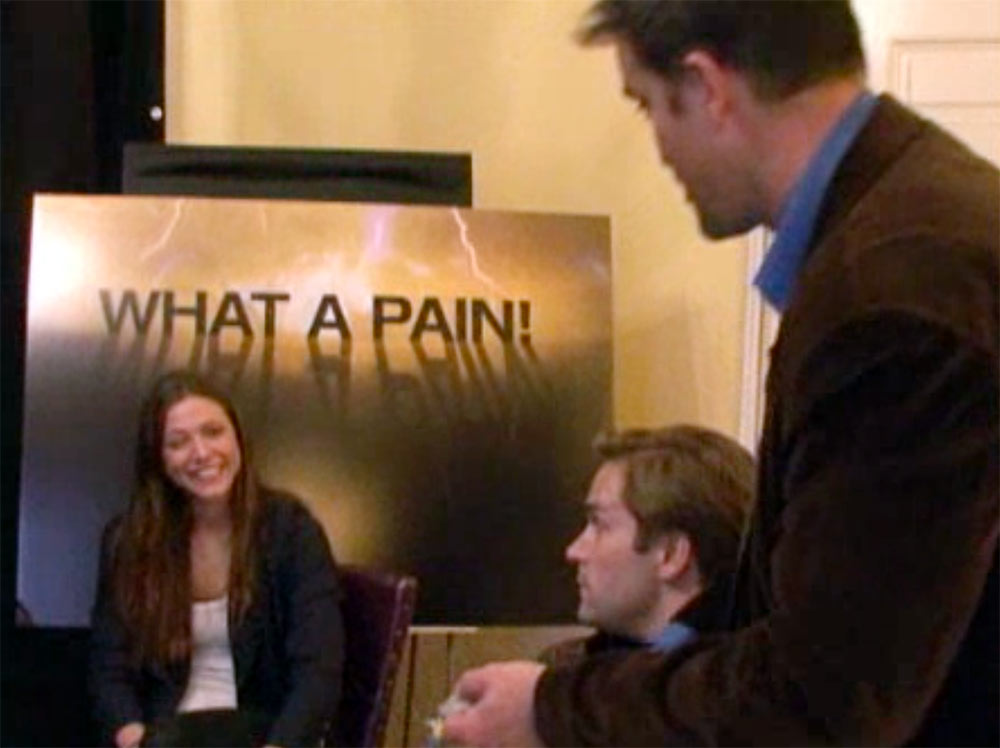BY MICHAEL SHERMER
In 2010, I worked on a Dateline NBC two-hour television special in which we replicated a number of now classic psychology experiments, including that of Yale University professor Stanley Milgram’s famous shock experiments from the early 1960s on the nature of evil. Here we provide links to the two-part segment television episodes of our replication of Milgram.
In public talks in which I screen these videos I am occasionally asked how we got this replication passed by an Institutional Review Board (an IRB), which is required for scientific research, inasmuch as such experiments could never be conducted today. We didn’t. This was for network television, not an academic laboratory, so the equivalent of an IRB was review by NBC’s legal department, which approved it. This seems to surprise — even shock — many academics, until I remind them of what people do to one another on reality television programs in which subjects are stranded on remote islands or thick jungles and left to fend for themselves — sometimes naked and afraid — in various contrivances that resemble a Hobbesian world of a war of all against all.
Shock and Awe in a Yale Lab
Shortly after the war crimes trial of Adolf Eichmann began in Jerusalem in July of 1961, psychologist Stanley Milgram devised a set of experiments, the aim of which was to better understand the psychology behind obedience to authority. Eichmann had been one of the chief orchestrators of the Final Solution but, like his fellow Nazis at the Nuremberg trials, his defense was that he was innocent by virtue of the fact that he was only following orders. Befehl ist Befehl — orders are orders — is now known as the Nuremberg defense, and it’s an excuse that seems particularly feeble in a case like Eichmann’s. “My boss told me to kill millions of people so — hey — what could I do?” is not a credible defense. But, Milgram wondered, was Eichmann unique in his willingness to comply with orders, no matter how atrocious? And just how far would ordinary people be willing to go?

A contestant for our faux television reality show “What a Pain!” talks to our actors playing the learner and the authority to be obeyed.
Obviously Milgram could not have his experimental subjects gas or shoot people, so he chose electric shock as a legal nonlethal substitute. Looking for subjects to participate in what was billed as a “study of memory,” Milgram advertised on the Yale campus and also in the surrounding New Haven community. He said he wanted “factory workers, city employees, laborers, barbers, businessmen, clerks, construction workers, sales people, telephone workers,” not just the usual guinea pigs of the psychology lab, i.e., undergraduates participating for extra credit or beer money. Milgram assigned his subjects to the role of “teacher” in what was purported to be research on the effects of punishment on learning. The protocol called for the subject to read a list of paired words to the “learner” (who was, in reality, a shill working for Milgram), then present the first word of each pair again, upon which the learner was to recall the second word. Each time that the learner was incorrect, the teacher was to deliver an electric shock from a box with toggle switches in 15-volt increments that ranged from 15 volts to 450 volts, and featured such labels as Slight Shock, Moderate Shock, Strong Shock, Very Strong Shock, Intense Shock, Extreme Intensity Shock, and DANGER: Severe Shock, XXXX.1 Despite the predictions of 40 psychiatrists that Milgram surveyed before the experiment, who predicted that only one percent of subjects would go all the way to the end, 65 percent of subject completed the experiment, flipping that final toggle switch to deliver a shocking 450 volts, a phenomenon the social psychologist Philip Zimbardo characterizes as “the pornography of power.”1[…]
No comments:
Post a Comment